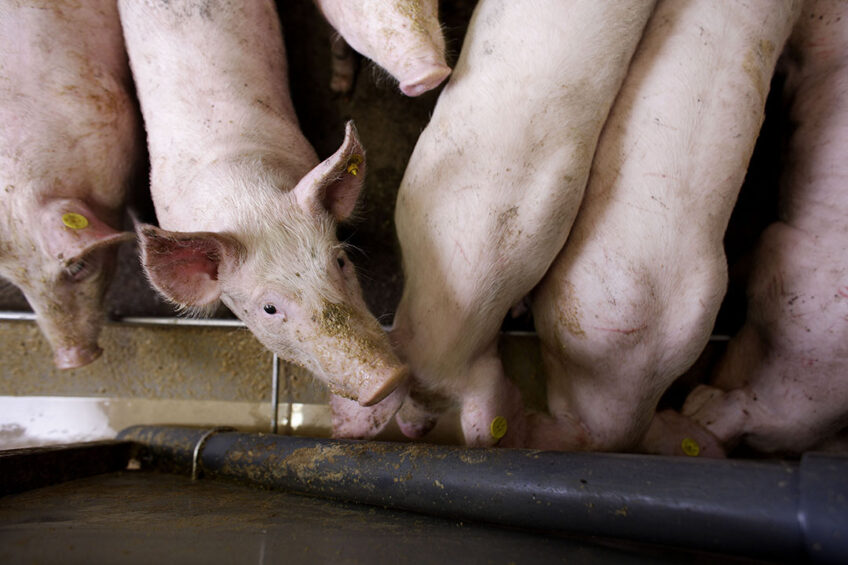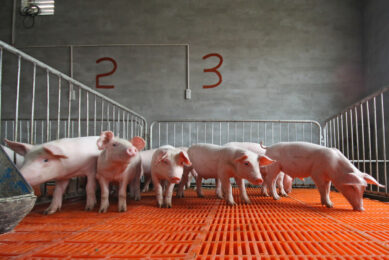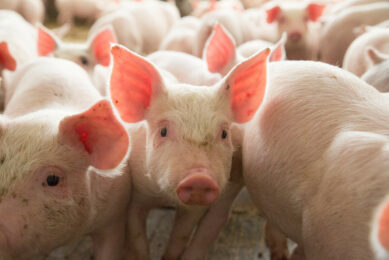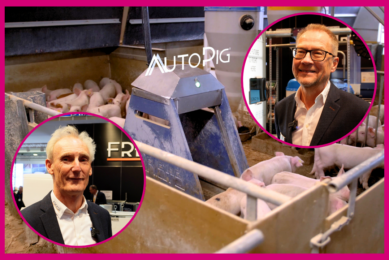Does stocking density affect pig welfare and performance?

Stocking density can be a controversial issue in pig production. After all, the more pigs can be kept in one room, the more efficient production will be. Yet, when pigs have more space at their disposal, they tend to perform better, science says. This applies to pigs at various ages, both at nursery/grower phase, but equally much just before slaughter.
The growing world population has increased the demand for pork products and has led to a rapid growth in the scale of swine enterprises globally. As a result, the swine production would intensify even more with farmers aiming to maximise output per animal unit, thus increasing the stocking density.
On the other hand, modern pig production systems are currently the focus of public and political attention to improve production of safe and high-quality pork while maintaining high pig welfare standards. High stocking densities exert passive impact on pig health, performance and welfare. Therefore, swine producers are required to balance welfare and building utilisation and choose an optimal stocking density for application to pig production.
Mixing unacquainted pigs
When several unacquainted pigs are mixed for the first time, they show aggressive behaviour and tend to fight to establish a dominance hierarchy within 24 hours. However, most fighting takes 10 minutes to occur within the first 30 to 60 minutes and then the frequency of aggressive behaviour decreases. The aggressive behaviour includes mouth-to-neck attacks with strong thrusts sideways and upwards. Increase in stocking density enhances stress and aggression and the instability within the dominance hierarchy. In addition, the space allowance is another factor affecting aggressive behaviour.
Research shows more intense fighting in small groups of 10 pigs with greater space allowance than in groups of 20 pigs stocked at lesser space allowance. Pigs with the same space allowance in a 30-pig group in lairage fought for about 10% of the time; ten times more than those in “small” groups of ten pigs which were seen to lie more.
Furthermore, skin damage caused by fighting in a group of 50 pigs was associated with increased time in the lairage and with greater space allowances. On the other hand, low stocking density in poorly insulated and open lairages during winter results in cold stress. Group size and pen shape are highly likely to be important co-factors. If stocking density is low, aggressive behaviour may enhance because of increased space allowance and the opportunity to interact with more individuals.
Effects on individual pig groups
Now what are the effects of stocking density on various ages and types of pigs?
Impact in gilts
Gilts reared in small groups of 6 pigs had a greater average of liveborn piglet number than gilts reared in a larger group with ten pigs. In addition, gilts in small litters had 1.1 more embryos at day 30 post-mating. Gilts raised in litters of 6 had 0.3 more pigs in first parity than gilts raised in litters of 12.
Impact in grow-finishing pigs
Stocking density has a major effect on feed intake, and growth performance. Space restrictions for grow-finishing pigs leads to decreased feed intake, reduced average daily gain, and variable effects on the gain:feed ratio. Various researches have shown data supporting that young pigs thrive when allocated some more space, see Table 1.
Assessing the interaction between space allowance and nutrients did not overcompensate for the decrease in performance from a reduced space allowance when finishing pigs were fed higher levels of energy and lysine.
Impact in late finishing/ pork quality
A look at the effect of stocking density on pork quality yields a similar picture. Low meat quality such as pale, soft exudative meat relates to the recent ante mortem welfare of pigs and is an indicator of high stress levels in lairage and during transport. Dry, firm, dark meat are all related to more prolonged stress and exhaustion, and is also an indicator of poor welfare. Low meat quality is due to a combination of stressors and it is not directly associated with stocking density. Increasing stocking density enhances the risk of pale, soft, exudative meat for both short transit times and transportation time over three hours.
Low stocking density increases lightness values, purge and drip loss of pork compared to high stocking density. High stocking density enhanced ante mortem glycogenolysis, thus developing dry, firm, dark meat pork. Furthermore, high stocking density leads to pH decline post mortem, and improved the water holding capacity of pork.
Reducing fighting leads to less stress, physical damage and higher meat quality. It is recommendable to avoid mixing unacquainted pigs in lairage pens. In case it is not practical to avoid mixing stranger pigs, the group size should be less than the 20 to 30 marks. Also, to decrease the amount of fighting time, it is recommendable to decrease the time spent in lairage to a minimal period along with reduced stocking density.
In addition, heat stress accompanies high stocking density in the transported pigs in summer. Therefore, when the stocking density is low, pigs are able to lie down during transportation and adapt to the new environment. Studies showed that around 3 hours should suffice for pigs to recover from the stressful effects of transportation. This time also reduces the occurrence of pale, soft, and exudative meat.
Multifactorial approach
Stocking density needs to be considered in a multifactorial approach to pig welfare in lairage. Relevant factors include genotype, group size, sex and age, temperature, humidity, air movement, and pen shape. They also include flooring, transit time, time in lairage, behaviour, physiology and meat quality. Therefore, all factors should be monitored for the same group of pigs from farm through to slaughter.
Lower stocking density causes unfamiliar pigs to fight more intensely. However, it allows subordinate pigs to escape from dominant pigs, and provides sufficient space for all pigs to lie down and rest. Further studies are necessary to focus on the impact of post-weaning stress caused by group size or space allowance on reproductive performance.
References are available upon request.
The Pig Progress Newsletter
Sign up for our newsletter and receive all our need-to-know content three times a week.











